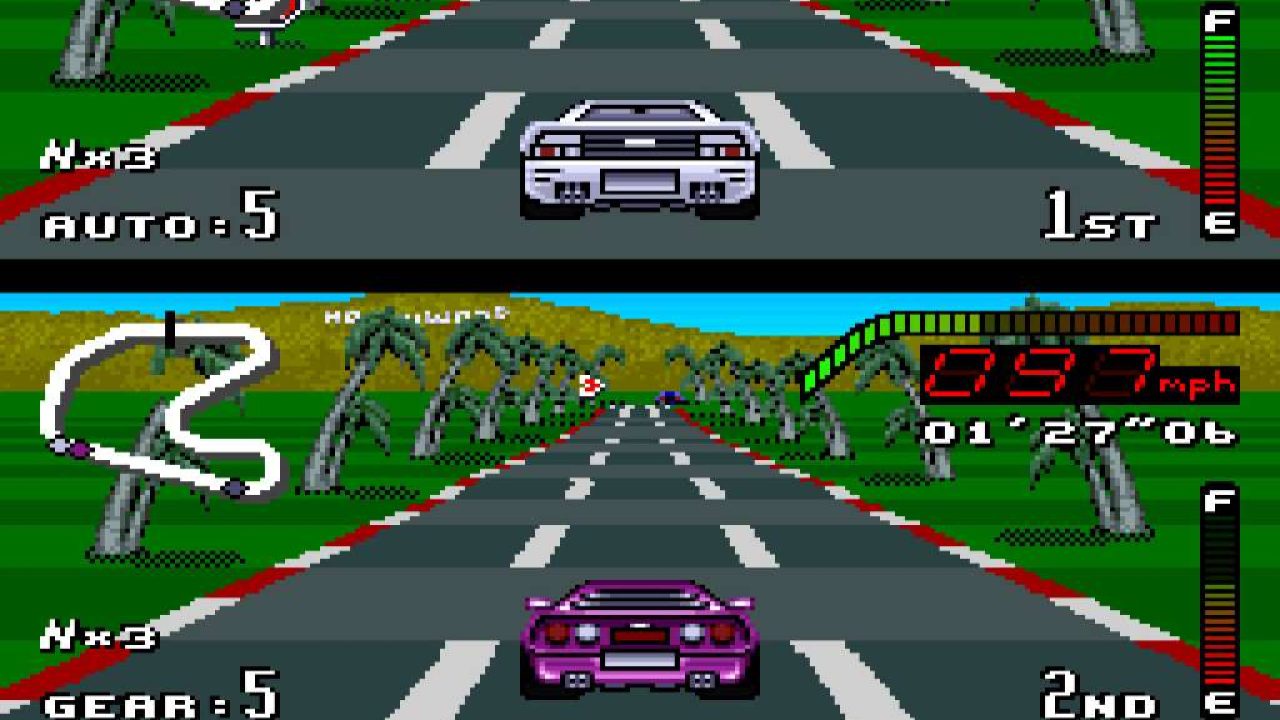Top Gear
Here’s a fun game that flew under my radar for many years.
The SNES really blew up the racing genre with its Mode 7 graphics capabilities. Top Gear (unrelated to the TV series of the same name) takes advantage of this, but in a strange presentation if you weren’t aware of the reasonings for it.
The game splits screens between Player 1 and the CPU in single player mode, but the game was thought of with two-player gaming in mind at first, and by the time the devs considered the single player modes, creating full screen versions of the sprites and more, would’ve delayed the release of the game, as well as increased the costs behind the scenes as well as production for a larger cartridge.
That’s what makes Top Gear unique, as you can glance at your opposition while zooming through the deep number of levels set-in real-world locations. I would equate this to playing Goldeneye 007 split-screen years later on the N64… but this was 1992 and the concept here works well.
Because of the split screens, Top Gear was able to graphically do things other games couldn’t. Other than F-Zero, the game appears to fly as your speeds reach 200mph.
The game is highly influential as well, spawning sequels and imitators. It may be one of the earliest games to use “nitro boosts” which instantly increases your car’s speed.
Speaking of, this could be one of the earlier games to offer so many customized options too. While there are four cars to choose from, each with their own array of handling attributes, you can also opt for automatic or manual transmissions.
The coolest aspect of Top Gear, however, are the controller options – including one where you hold the SNES controller upside-down! (I’ve never seen that before!)
Now, I’m not the biggest racing game fan, nor am I very good at them – so Top Gear also represents a pretty large challenge for gamers, with a high level of replay-ability. Each country features a number of tracks to race through, and you must finish near or at the top to unlock the next set. It won’t always be that simple, however, because you need to strategize pit stops to make sure you don’t run out of fuel as well.
Tucked within all of this is a kickass soundtrack lifted from the Lotus series of racing games on the Amiga, which were also produced by Barry Leitch. According to Wikipedia:
For example, the title music of Top Gear is taken from the ending of Lotus Turbo Challenge 2, and the third race of each country uses a remixed version of the Lotus Esprit Turbo Challenge title theme.
Another neat addition are some of the speech bubbles in-game, which usually appear after boosting your speed with a nitro or when you bump into other cars.
The game is simple to pickup but tough to master, making it one of those rare titles where plunking down $60-70 back in the 90’s would’ve been a huge value for gamers in that era.
As far as nostalgia is concerned, I’d put Top Gear a tier below something like Sega’s Outrun, but among the better racing games of its time and one retro gamers would be happy revisiting.
